SLOPING OFF...
...the Newsletter of Christchurch and District Model Flying Club for...March 2024
A first look at indoor flying, by David Bicker

My first experiences as a “newbie”, trying out indoor flying
My first visit as a spectator was on Friday 19/01/2024. Let me say from the very start that I had a complete lack of knowledge of how indoor flying works and the technical side of it. There are several knowledgeable club members who can be grilled for the more technical aspects of the hobby. This is just a taster to arouse your interest. I thought that it might encourage more members to attend the indoor flying evenings if the hobby was profiled. There hasn’t been any contribution to Sloping Off on the subject over the past 2 years (that’s as far back as I checked).
Here's a link to a short video compilation of the 19/01/2024 indoor flying session. https://youtu.be/BerfGyLrsPE
There were 5 distinct branches of indoor “flying” that were on show that evening.
1: Ultra-lightweight slow flying models of about a 12” span that waft around the hall like a piece of gossamer. They run a geared brushless motor off a tiny 1S LiPo battery. They weigh in at around 25 grams (without the weight of the tiny battery added).
E-Flite UMX Night Vapor
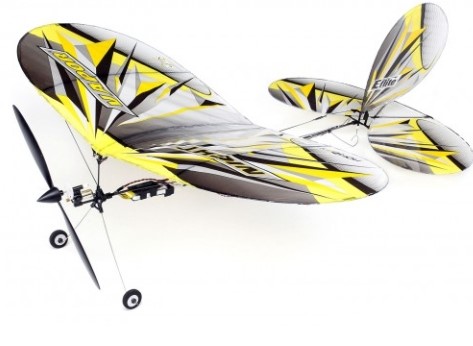
Within a few minutes of arriving and watching John Goddard fly one, I was passed the TX & told “have some fun”! Luckily everything happens in slow motion so it doesn’t take long to acclimatise to the different pace of flying indoors with a slow model like this. Height was controlled as much by throttle control as by the elevator. I found initially that it changed height more smoothly and gently adjusting the thrust than by using the elevator, which, depending upon the speed that it was travelling at could either hardly affect pitch – or change it pretty fast. Later on practicing a mixture of small inputs from both smoothed things out nicely as I got used to it.
Flying in the hall with a light, slow moving model like this that has a relatively large wing surface area for the size of the model gives some unexpected side-effects. I was warned about being prepared for the turbulence from other passing models and to watch out for the draught wafting in from the draughty closed doorways, both of which can pitch the model off course. It’s like hitting a boat wake when on a wake board in water. The other challenge at Durlston is the full height curtain covering the stage area at the far end of the hall, and also a smaller curtain hung (what you would think was) fairly high up in the ceiling area to mask the lighting gantry. Depth perception becomes a challenge when you are flying the model at the curtain end of the hall. In my case I caught the right wing tip on the curtain once, resulting in the model falling vertically off the curtain onto the floor. An undercarriage strut detached itself but was plugged back in easily enough and the flying resumed. Even with a tiny 130mAh LiPo battery, the model stayed both airborne and controllable for the best part of 10 minutes. The model pictured above this is a complete kit with all of the power train except for the battery and sells (from E-Flite) for £108
There is an alternative, the much older Butterfly T1 (There were four or five of those in the Club back in the “cough cough” - Ed), but having researched it, the separate parts needed to complete a £20 Banggood Butterfly T1 would end up totalling more than the E-Flite model.
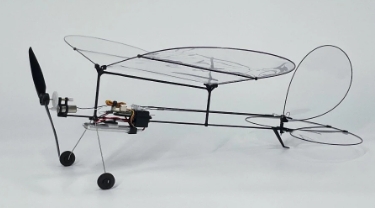
2: Larger 3D aerobatic models with a wingspan of around 24” to 36” with a more substantial power train that can “hang” the plane on the prop and fly at what looks like a stalled angle. These models require a higher skill level and are capable of full 3D aerobatics in skilled hands. As an example, the Multiplex Extra 33SC with a wingspan of 850mm can be bought from rapid RC Models for £77. It weighs in at a “hefty” 175 grams.
Multiplex Extra 33SC
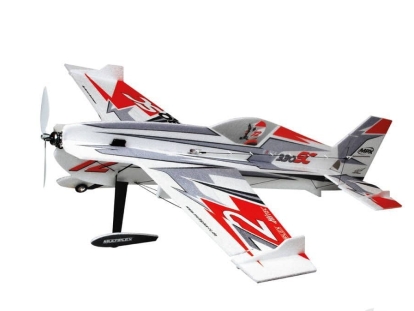
3: Micro helicopters of varying sizes, with or without stabilisation assistance. These come in a variety of sizes and capabilities and are available from lots of outlets, from as little as £10. Obviously, if you pay a bit more, you will get a better quality helicopter with more functionality and control. Stabilisation options are great for “newbies” and can often be switched on or off depending on who is flying the model and how they want it to perform. As an example: the Ninja 250 from Rapid RC Models, priced at £67
Ninja 250
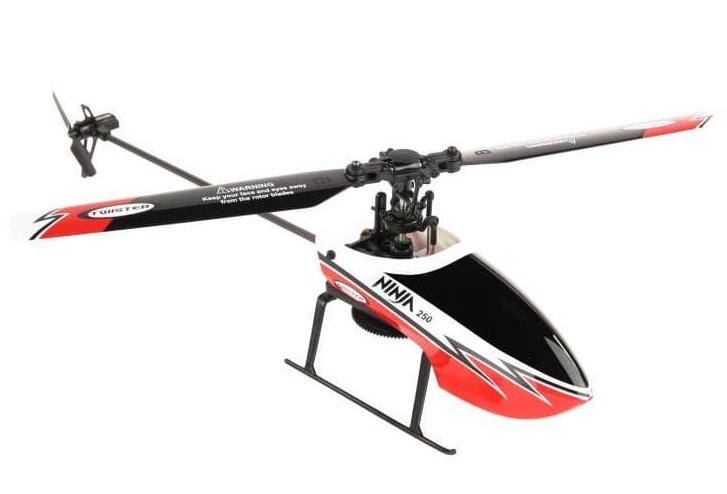
4: Micro Quadcopters. Tiny little quadcopters that several club members have dismembered to build micro hovercraft, using the components out of them. A compact little box of fun that’s easy to carry around and usually very robust. If you can find one, the E010 model used to sell for around £10 for the full kit including the TX. As an example: Emax Tinyhawk indoor FPV , from Buzzflyer.co.uk, priced at £70
Emax Tinyhawk
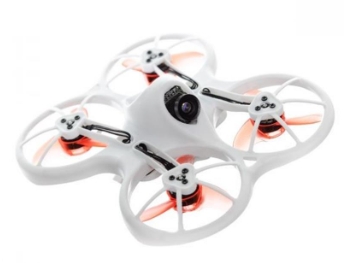
A Micro Quad
5: Micro hovercraft. These fit in the palm of your hand and are great fun to drift around the floor, although the do sound very frantic with their tiny high speed props. You can buy ready built hovercraft, or, as several members have done, you can cannibalise a micro quadcopter for parts to build one on a small sheet of Depron. I had a go with one and was surprised how fast it was, also how different it was trying to control it! Power drifts were the order of the day. They are very robust, so collisions with the walls rarely damage them. As an example, the XIONGDA hovercraft sold on Amazon for £40
XIONGDA hovercraft
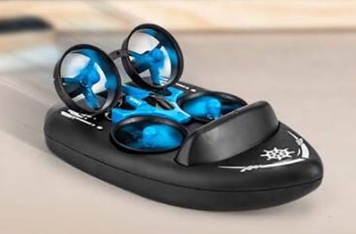
As well as the 5 branches of the hobby that were “in the box” or being flown that evening, there is a 6th branch.
6. Scale micro planes. These vary widely in design, from true-to scale WW1 tri-planes, through WW2 and on to more modern designs. You name it and there’s probably a scale version of it available made from Depron, plastic or Balsa. There was an article on Microaces in the September 2021 issue of Sloping Off that shows a range of models (that I think are scale). One that has caught my eye in an old issue of a BMFA mag, was the Vought V-173. I saw the real one on static display outside an exhibition hall at Futuroscope in southwest France some years ago. I was trying to describe it to a member attending the evening’s meeting, but a picture of it says so much more.
Vought V-173
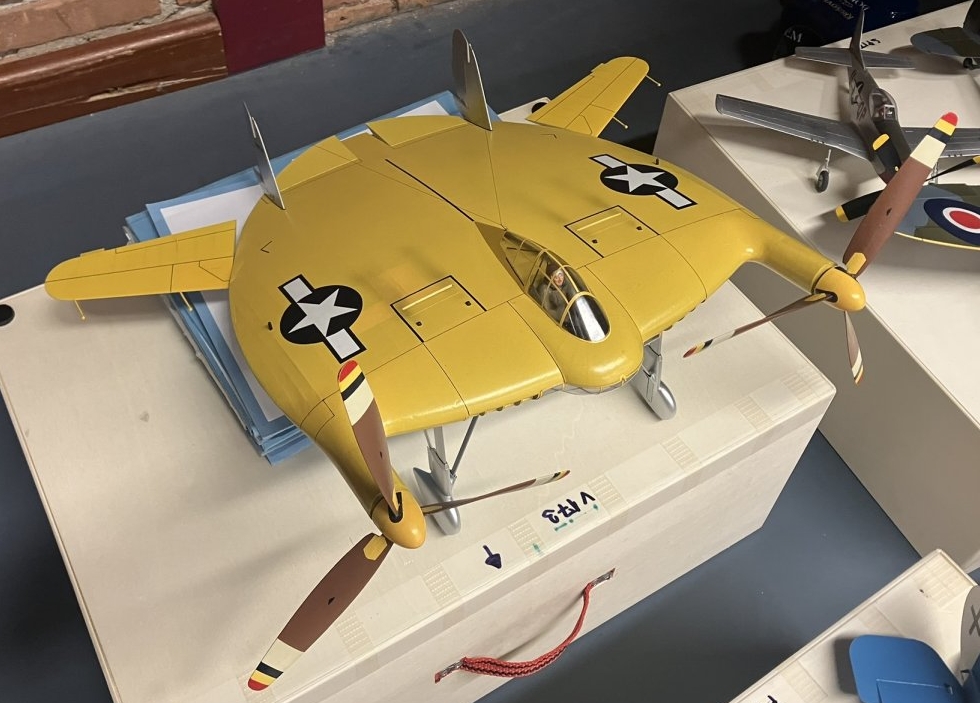
There are far too many examples available to list, so here are 2 at the lower end of the price range: PT-19 Fairchild from elite Models for £185
PT-19 Fairchild
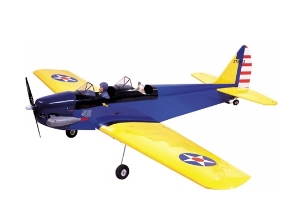
P51 Mustang from Elite Models for £212
P51 Mustang
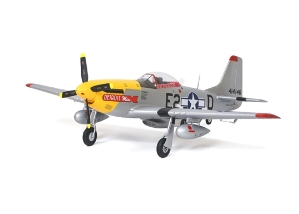
I think that this indoor branch of the hobby is in need of better support / attendance, even if it is as a spectator. It would be a shame to lose it if the attendance drops away so much that it is no longer viable to rent the hall for the hobby. Come on guys – come and watch the fun and more than likely be given a chance to try it out too!
NB: If you want to attend, be aware that to reach the sports hall at Durlston School, you need to drive all the way up the entrance road and then drive past the No Entry sign (it says buses only) to reach the sports hall.
David Bicker